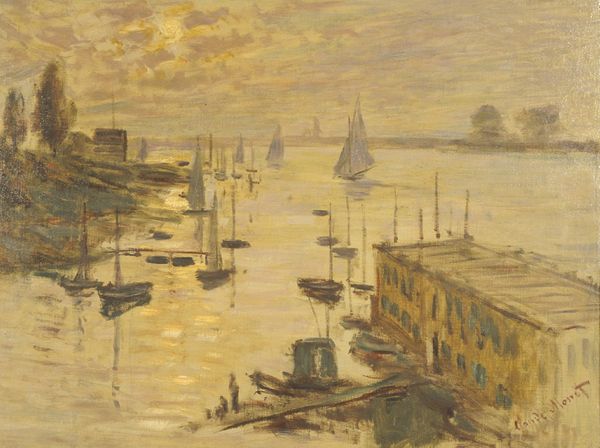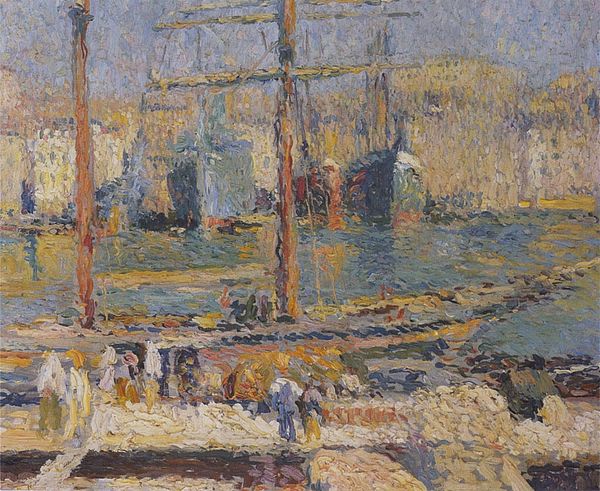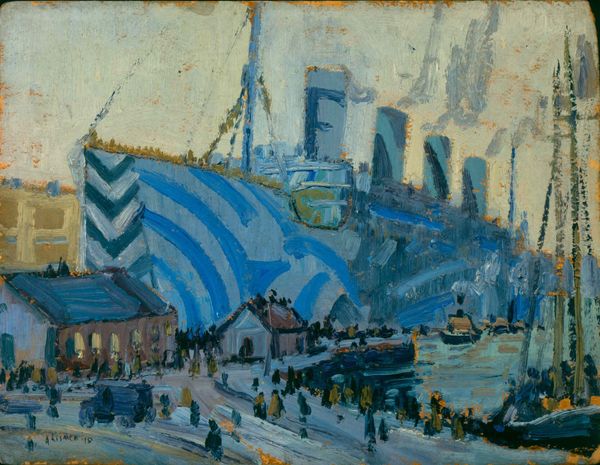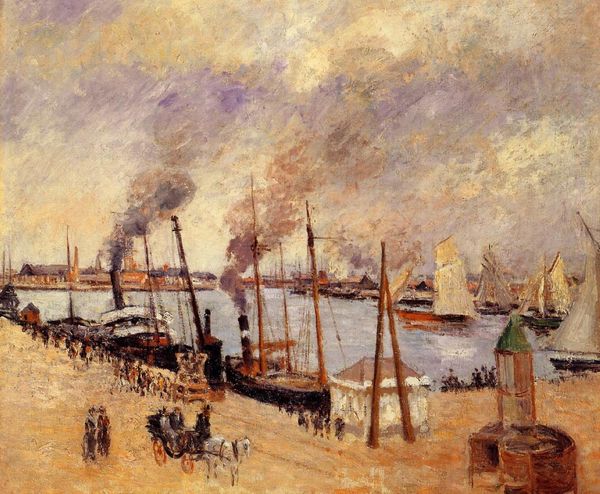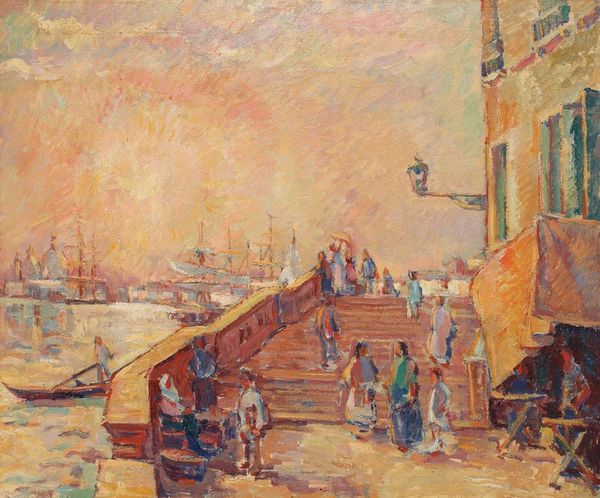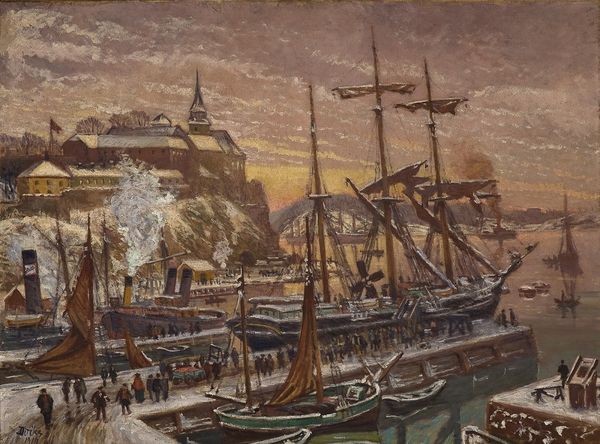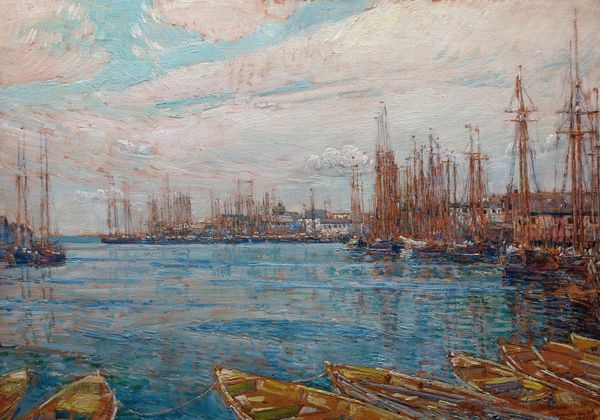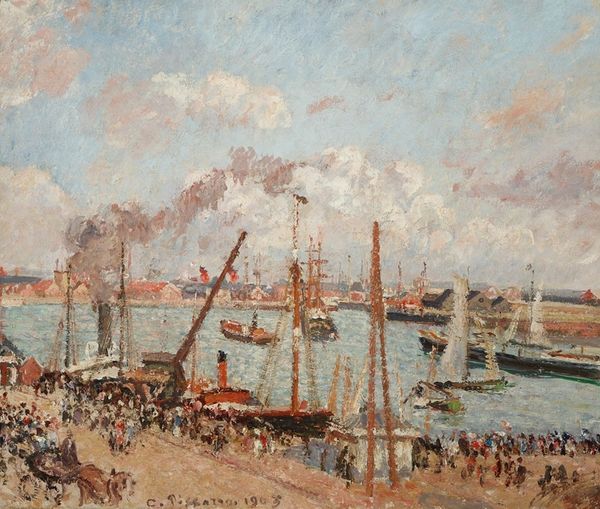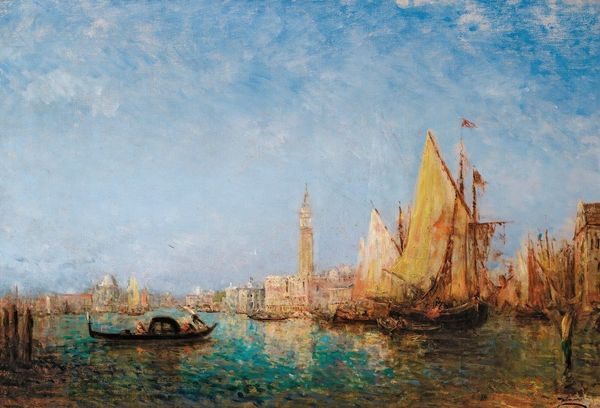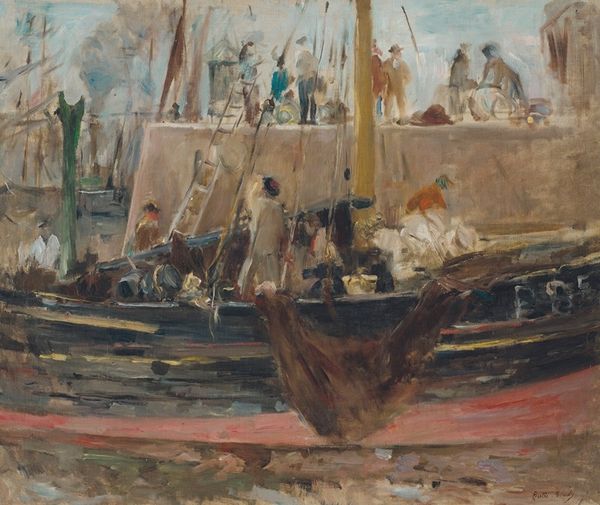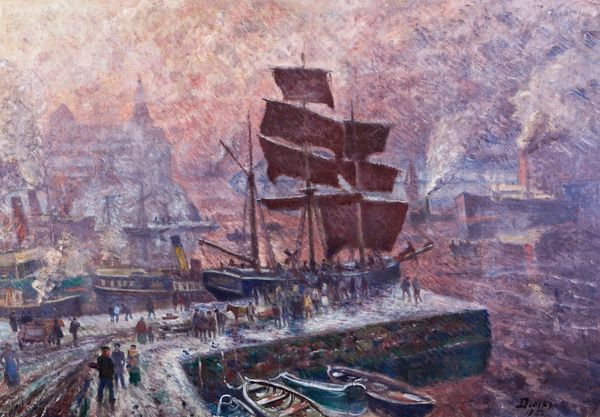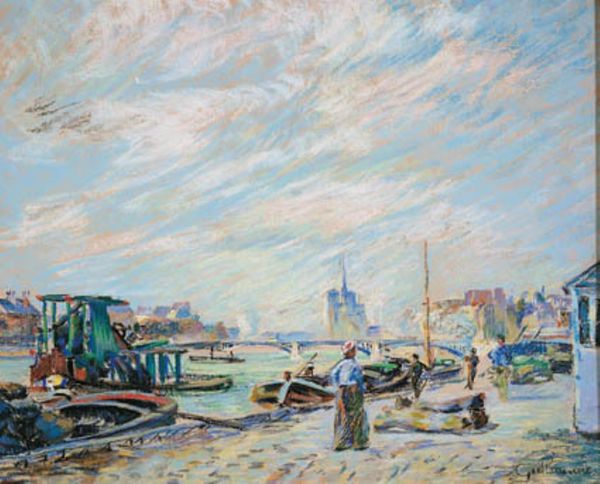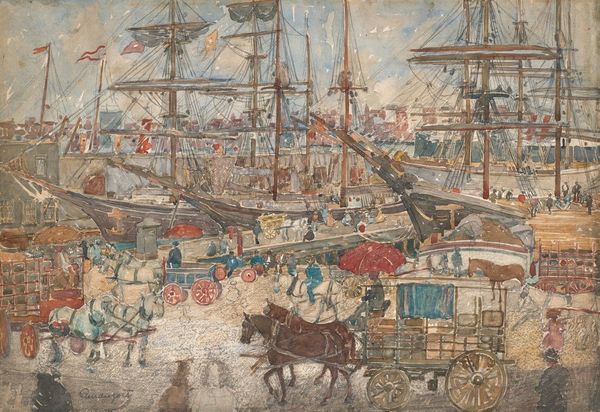
oil-paint
#
boat
#
ship
#
impressionism
#
oil-paint
#
vehicle
#
landscape
#
impressionist landscape
#
oil painting
#
men
#
water
#
line
#
cityscape
Copyright: Public domain
Editor: This is "The Grand Dock at Le Havre" by Claude Monet, painted in 1872. It's an oil painting depicting a bustling harbor scene. I'm struck by how the figures seem secondary to the materials, to the ships and barrels themselves. How do you interpret this work? Curator: It’s tempting to view this through the traditional lens of Impressionism, focusing on light and color, but let's look at its materiality. This is Le Havre, a significant port city. What's happening here? Ships, presumably laden with goods, are docked; there's activity. The very brushstrokes Monet employs mimic the chaotic energy of labor and commerce. Editor: So, you’re seeing it less as an atmospheric study and more as a documentation, or even a celebration, of industrial activity? Curator: Exactly. The ‘impression’ is secondary. The focus is on production, on the movement of goods and people. The painting becomes an artifact, documenting a moment in the relentless engine of global trade. Think about the materials themselves: the wood of the ships, the barrels… the sheer volume implies enormous consumption and exchange. Editor: I hadn't thought of it that way, as a record of economic activity. The smoke from the chimneys now seems less about atmosphere and more about the machines churning away, feeding this constant process. Curator: Precisely. And who are those figures in the foreground? The laborers facilitating it all. How does Monet depict them versus, say, the ships themselves? Editor: They're much less defined. Almost lost in the busyness of the port. Curator: Consider this a visual representation of labor's role within a capitalist system. We see its product and we see who does the work. And Monet? He's right there at his easel, engaging in his own labor within that same system. Editor: That makes me rethink my whole perception of Impressionism. It's more than just pretty light. Curator: It can be, when we refocus on the materials and processes underlying it. Look closely—the whole painting is an engagement with the labor, consumption, and commerce of its time.
Comments
No comments
Be the first to comment and join the conversation on the ultimate creative platform.
